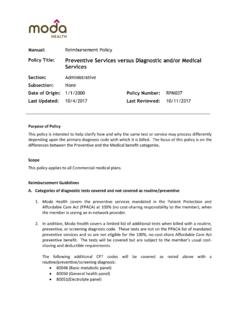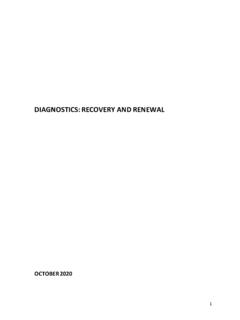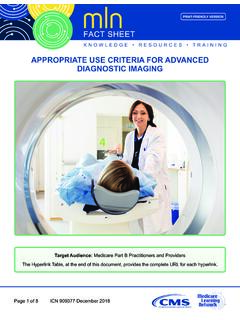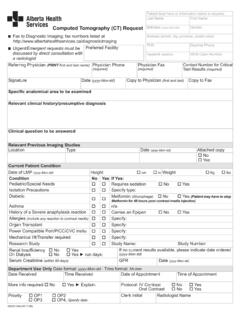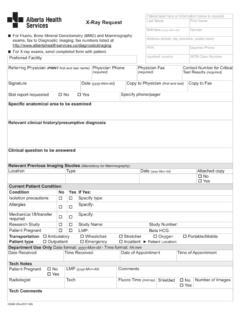Transcription of DSM-5 Diagnostic Criteria for ADHD - American Academy of ...
1 DSM-5 Diagnostic Criteria for ADHD Symptoms and/or behaviors that have persisted 6 months in 2 settings ( , school, home, church). Symptoms have negatively impacted academic, social, and/or occupational functioning. In patients aged < 17 years, 6 symptoms are necessary; in those aged 17 years, 5 symptoms are necessary. Inattentive Type Diagnosis Criteria Displays poor listening skills Loses and/or misplaces items needed to complete activities or tasks Sidetracked by external or unimportant stimuli Forgets daily activities Diminished attention span Lacks ability to complete schoolwork and other assignments or to follow instructions Avoids or is disinclined to begin homework or activities requiring concentration Fails to focus on details and/or makes thoughtless mistakes in schoolwork or assignments Hyperactive/ Impulsive Type Diagnosis Criteria Hyperactive Symptoms.
2 Squirms when seated or fidgets with feet/hands Marked restlessness that is difficult to control Appears to be driven by a motor or is often on the go Lacks ability to play and engage in leisure activities in a quiet manner Incapable of staying seated in class Overly talkative Impulsive Symptoms: Difficulty waiting turn Interrupts or intrudes into conversations and activities of others Impulsively blurts out answers before questions completed Additional Requirements for Diagnosis Symptoms present prior to age 12 years Symptoms not better accounted for by a different psychiatric disorder ( , mood disorder, anxiety disorder) and do not occur exclusively during a psychotic disorder ( , schizophrenia) Symptoms not exclusively a manifestation of oppositional behavior Classification Combined Type: Patient meets both inattentive and hyperactive/impulsive Criteria for the past 6 months Predominantly Inattentive Type.
3 Patient meets inattentive criterion, but not hyperactive/impulse criterion, for the past 6 months Predominantly Hyperactive/Impulsive Type: Patient meets hyperactive/impulse criterion, but not inattentive criterion, for the past 6 months Symptoms may be classified as mild, moderate, or severe based on symptom severity Source: DSM-5 Diagnostic and Statistical Manual of Mental Disorders, 5th edition; ADHD: attention deficit hyperactivity disorder










